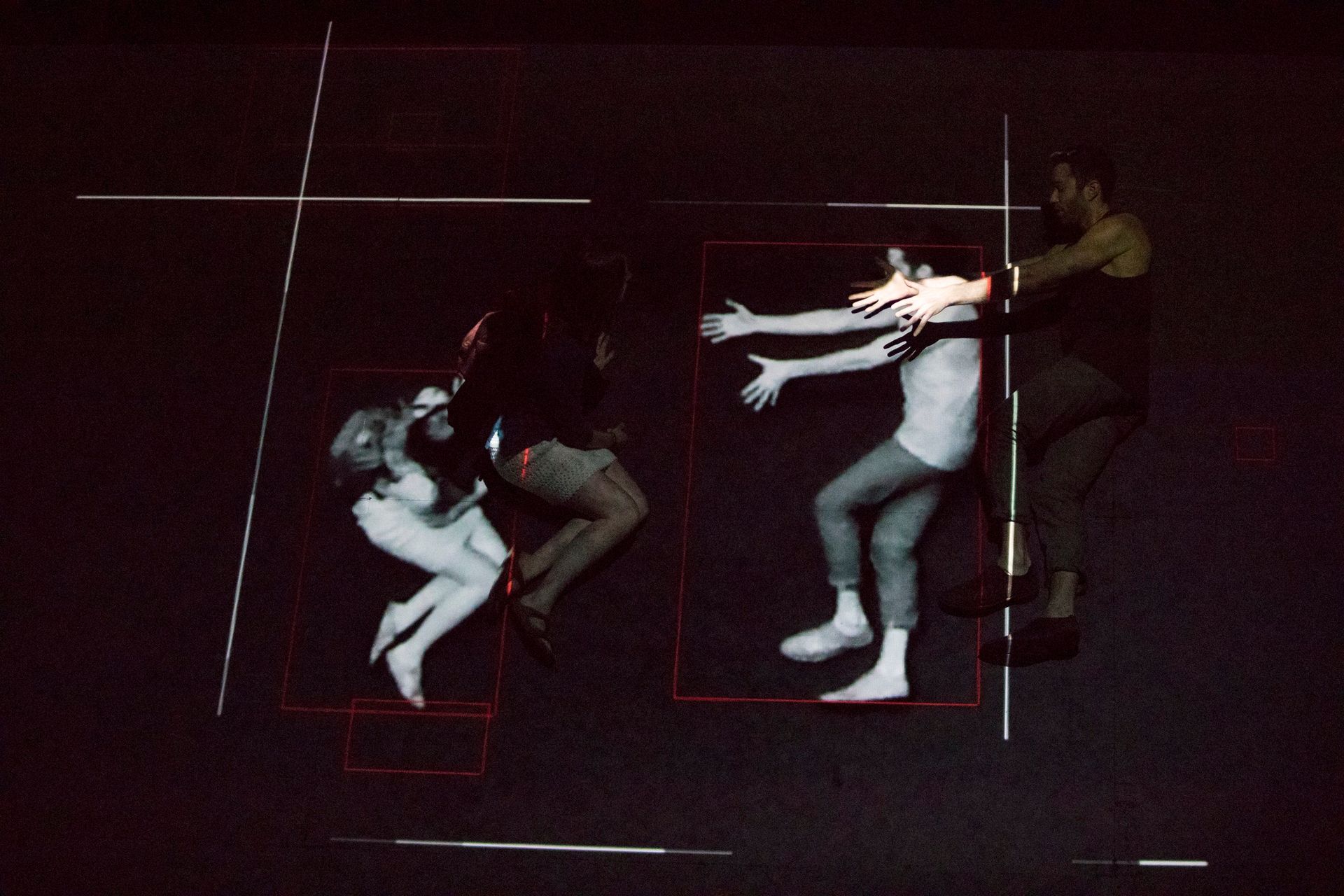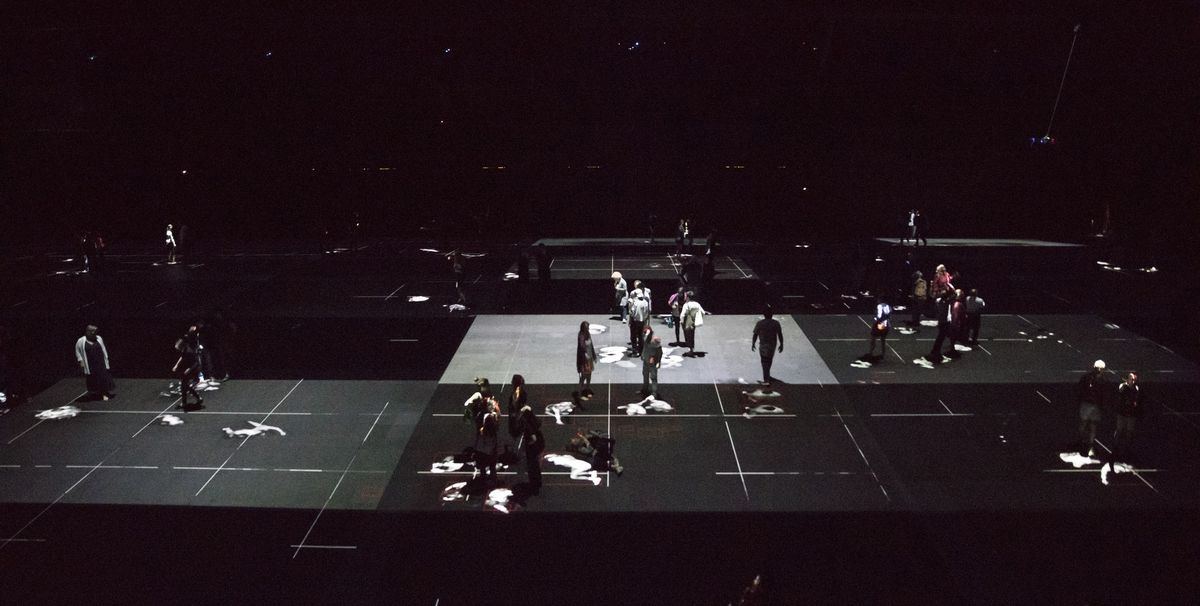The traditional Germanic fairytale of lost babes in the woods takes a 21st-century twist at the Park Avenue Armory, where the Chinese artist Ai Weiwei and the Swiss architects Jacques Herzog and Pierre de Meuron have collaborated to create the immersive installation Hansel and Gretel. The two-part work, which opens to the public on Wednesday 7 June, (until 6 August) looks at how the culture of high-tech surveillance has changed the way people experience public space.
Visitors enter the first—and most dramatic—part of the installation on Lexington Avenue through a dark and narrow hallway, rather than the grand, main entrance on Park Avenue. Once inside the Armory’s massive, 55,000 sq ft Drill Hall, they find themselves ensnared in a surveillance grid, with drones buzzing overhead carrying infrared cameras that beam ghostly projections of every individual onto the floor next to them, like reverse shadows. There are some brighter patches in the space, depending on how many people are in the drill hall, but the edges of the room recede into gloom. “You can disappear in this darkness,” Ai says. “It’s so gentle.”
The darkness can be frightening as well—along with persistent sound of the drones—but the experience is also playful. Visitors move in exaggerated ways to see how it effects their projections on the floor, some try to outrun the drones, many lie down and pose for selfies with their phantom doubles. “The unexpected is a very important element of the space. You do not lie down on the floor of MoMA or [the Centre] Pompidou,” de Meuron says. “Some people do—maybe children do—but not in the way they do here.” Unfamiliarity and a feeling of insecurity are at the core of curiosity and imagination, Ai says, but people “also try to grab a piece of [the moment] to overcome” those feelings—hence the selfies.

The fairytale name came from “the moment of getting lost and finding your way in a dark space” Herzog says, but the installation also reverses the familiar story. While Hansel and Gretel left their own trail of breadcrumbs and stones, here, the camera points the way and traces your steps.
In Hansel and Gretel, “it was a forest they knew… and then it turned out to be much more dangerous than they thought”, adds Rebecca Robertson, the executive producer and president of the Park Avenue Armory. This mirrors how people experience and think about public space, she says. When surveillance is introduced, the idea of a free and open space changes.
For the second part of the installation, which mimics a surveillance station, visitors must go around the block-sized building and enter through the main entrance on Park Avenue. On their way in, they have a quick photo taken, resembling the blurry grey pictures on a CCTV camera, and these are shown in rotation on large screens place along the walls of the main hallway. Long tables are lined with iPads, where visitors can sit down and read about historical examples of surveillance (such as the camera obscura), take a picture of themselves to search for their own snapshots and observe their fellow visitors.
Installation on the project began last week, and groups of around 75 people have served as guinea pigs to fine-tune the technology, including facial recognition software and heat-mapping. This resulted in some unexpected lessons about surveillance for the organisers, such as that clothing made from breathable fabrics like cotton makes a person easier to pick up on camera, Robertson explains. This was perhaps old news to Ai, who was kept under house arrest in China for years, and joked at the press preview that the accuracy rate for China’s facial recognition technology is "150%".
Overall, the installation is “a balance between menace and fun”, Robertson says. “I think it’s like sex—sometimes lust comes with pain, but not everybody likes it. Sometimes feelings can be very contradictory,” Herzog says. He adds that an art project like this, “which is not an ordinary space, has a more complex psychological structure. It gives you more possibilities to enjoy or to perceive—and hopefully we have achieved such a complexity.”


